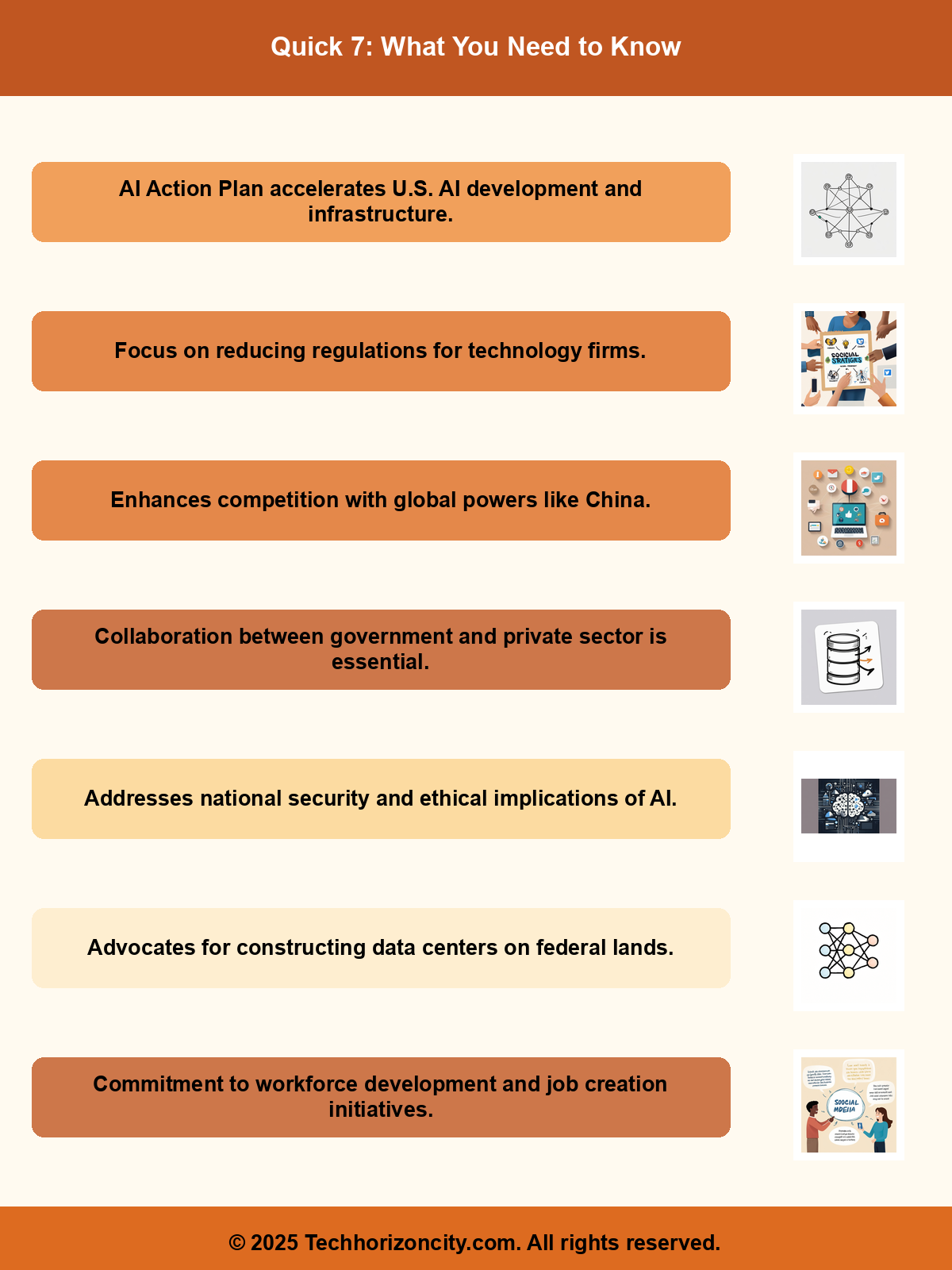Executive Summary
The recent unveiling of the AI Action Plan by the Trump administration marks a pivotal moment in the ongoing discourse about artificial intelligence in the United States. In contrast to the more measured approach adopted by the Biden administration, this new directive aims to accelerate the development of AI infrastructure while addressing pressing national security concerns. With ambitious goals centered around reducing regulations for technology firms, enhancing data center construction, and fostering competition with global powers like China, the plan is poised to reshape the AI landscape significantly. However, the successful implementation of these initiatives will hinge on effective collaboration between government entities and the private sector, alongside a balanced consideration of ethical implications and workforce transitions.

Background Context
The evolution of artificial intelligence has captivated policymakers and industry leaders alike, evolving from a niche field into a central pillar of national strategy. As AI technology advances, the stakes have risen, prompting concerns about global competitiveness and security. The Biden administration took a cautious stance towards AI regulation, prioritizing safety and ethics in its approach. In contrast, the Trump administration’s AI Action Plan focuses on rapid deployment and infrastructure development, aiming to assert U.S. leadership in the global AI race.
For technical resources and innovative solutions, please visit EchoesOfCreationUS for specialized technical resources.
The framework for this action plan is rooted in collaboration, having been shaped by a diverse group of experts, including prominent figures such as Michael Kratsios, David Sacks, and Marco Rubio. This collaboration was further enriched by public input from over 10,000 interest groups, highlighting the multifaceted nature of the concerns and aspirations surrounding AI. The result is a blueprint that outlines ambitious proposals without yet providing a finalized roadmap for execution.
Analysis of Implications
The implications of the AI Action Plan go far beyond mere technological advancement; they touch upon vital aspects such as economic growth, workforce development, and national security. By advocating for the construction of data centers—potentially utilizing federal lands—the plan seeks to ensure that the U.S. can maintain its technological edge while addressing energy concerns during peak periods. This dual focus on infrastructure and resilience is commendable, but it also raises questions about sustainability and the environmental impact of such large-scale projects.
Discover exclusive offers and premium content at Active Living Offers – your gateway to enhanced productivity and lifestyle solutions.
Moreover, the commitment to upskilling workers and collaborating with local governments to create jobs is a positive step towards mitigating the workforce disruptions often associated with technological advancements. However, the success of these initiatives will depend on the quality and accessibility of training programs designed to prepare employees for the evolving job market. A proactive approach to education and workforce transition will be crucial in fostering public trust and ensuring that the benefits of AI are broadly shared.
Industry Impact Assessment
The AI Action Plan is likely to have significant implications for various stakeholders across the tech industry. Notably, companies associated with the Disrupt 2025 agenda—such as Netflix, ElevenLabs, Wayve, and Sequoia Capital—are poised to benefit from reduced regulatory barriers and increased investment in AI infrastructure. This environment of innovation could catalyze breakthroughs that redefine consumer experiences and operational efficiencies.
However, the plan also poses challenges. The removal of a provision from a budget bill that would have restricted states from regulating AI for the next decade could lead to a patchwork of regulations across the country. While the intention may be to foster innovation, the resultant uncertainty could deter investment and stifle the very growth the administration seeks to promote. As states take different approaches to AI regulation, businesses may find themselves navigating a complex legal landscape that could hinder their operations.
Future Outlook
Looking ahead, the success of the AI Action Plan hinges on its execution. If done correctly, it could usher in what the administration has termed a “new golden age of human flourishing.” However, this outcome will require careful management of stakeholder interests, ethical considerations in AI deployment, and an unwavering focus on the long-term societal impacts of AI technologies.
Furthermore, as global competition in AI heats up, particularly with nations like China making significant strides, the U.S. must remain vigilant and adaptable. The balance between innovation and regulation will be critical in ensuring that the American tech sector can thrive amidst these challenges. The collaborative spirit fostered by this plan should encourage ongoing dialogue among industry leaders, policymakers, and the public to address the complexities surrounding AI development.
Conclusion with Key Takeaways
The AI Action Plan represents a bold shift in strategy for artificial intelligence in the United States, prioritizing rapid advancement and infrastructure development in a bid to enhance national security and economic competitiveness. While its ambitious goals promise a wealth of opportunities, the plan must navigate a landscape fraught with challenges, including regulatory complexities and workforce transitions. The effectiveness of collaboration between government and industry will be paramount in realizing the potential of this initiative. Ultimately, the future of AI in America rests on fostering innovation while ensuring that ethical considerations and societal impacts remain at the forefront of the conversation.
Disclaimer: This article was independently created based on publicly available information and industry analysis.
